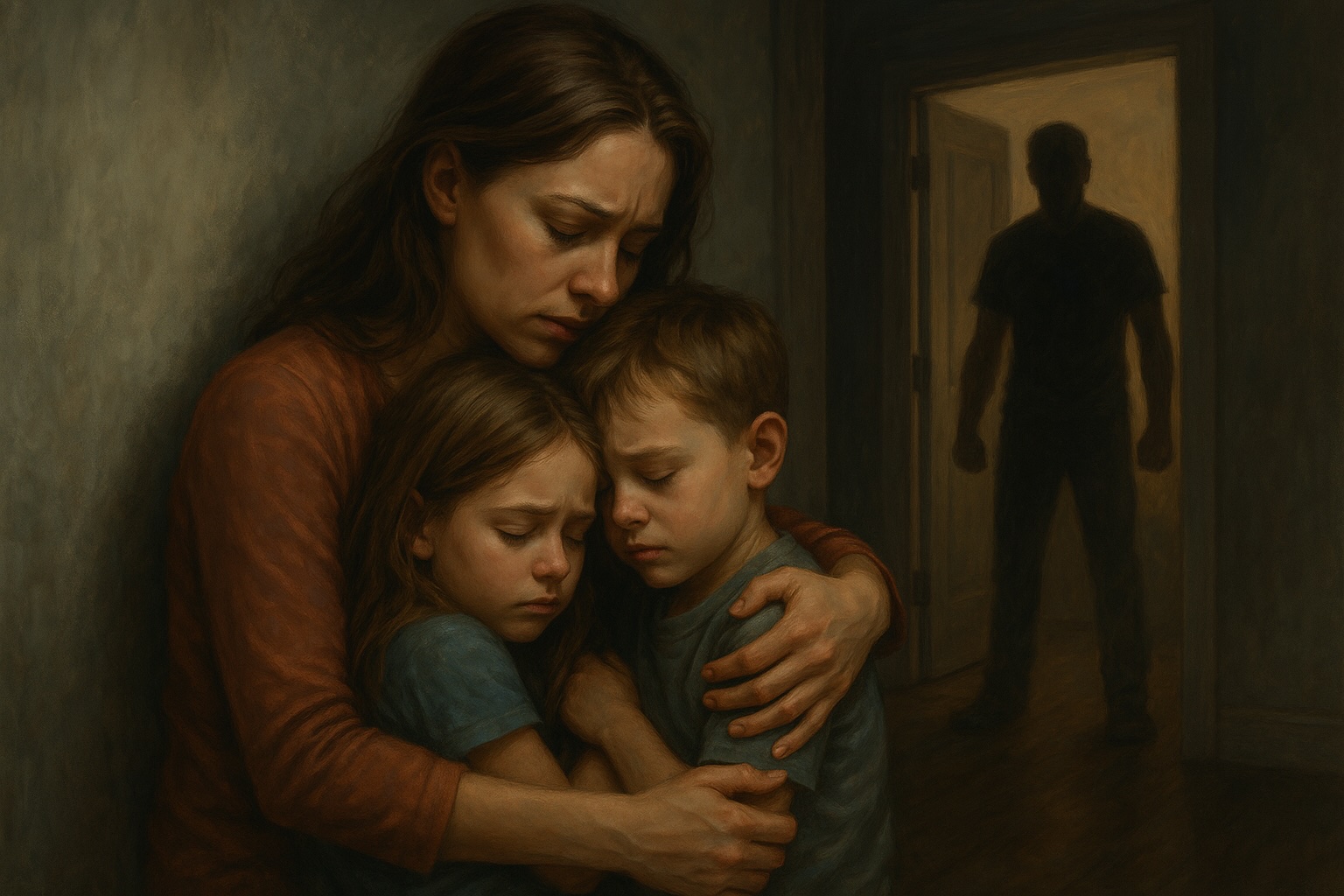Protecting Your Children During and After Domestic Violence
If you’re experiencing abuse and have children, their safety is your top concern. This guide offers practical steps to protect your kids during and after domestic violence—legally, emotionally, and physically.

If you’re a parent surviving domestic violence, your children’s safety and wellbeing may be your deepest concern. Abuse at home can affect kids emotionally, mentally, and physically—even if they aren’t directly harmed.
This guide explains how to keep your children safe during abuse, and how to protect them through legal and support channels after you leave.
***
### 🚸 During the Abuse: Immediate Safety Steps
* Create a **code word** or hand signal with your children that means “go to a safe place”
* Practice **emergency drills** (where to hide, how to call 911)
* Teach children never to intervene in a fight
* Keep **important documents** (ID, custody orders) in a go-bag
* Identify **safe adults** they can run to (neighbor, teacher, school office)
> Tip: Reassure your child they’re not responsible and not to blame.
***
### 🏃♀️ Leaving the Abuser: Special Considerations for Kids
* Choose a **shelter that accepts children** (most do in Ontario)
* Bring comfort items like toys, blankets, and school supplies
* Inform daycare or schools that only you (or trusted adults) can pick them up
* If needed, **apply for emergency custody** or child protection
* Speak to a lawyer or DV advocate before taking kids across borders or provinces
***
### ⚖️ Legal Protections for Children in Ontario
* You can request a **restraining order** on behalf of your children
* You can ask the family court for **sole custody** if the other parent is abusive
* Legal Aid Ontario may help with custody, access, and child protection cases
* If CAS (Children’s Aid Society) is involved, explain your safety plan and intent to protect
> Courts consider exposure to abuse a serious risk to children—even if no physical harm occurred.
***
### 🧠 Supporting Your Child Emotionally
* Talk openly in **age-appropriate ways** about what’s happened
* Let them know:
* “The violence wasn’t your fault.”
* “I’m here to keep you safe.”
* “It’s okay to feel sad or confused.”
* Look for **child-specific counselling**—many shelters and clinics offer this
* Keep their routines stable (school, meals, bedtime) as much as possible
* Limit contact with the abuser if it causes stress or fear
***
### 👩⚖️ Family Court: Access and Custody Considerations
* Document all incidents involving the child or threats to the child
* Ask for **supervised access only**, or no contact if risk is high
* You may be required to file an **Affidavit of Contempt** if the abuser violates court orders
* You can file a **Motion to Vary Order (Form 8B)** to change access arrangements
* Courts prioritize the **child’s best interests and safety** above parental access
***
### 📌 Summary: How to Protect Your Kids During and After Abuse
* ✅ Plan for emergencies and use code words
* ✅ Secure legal documents and prepare a safe exit
* ✅ Request custody or court orders that protect the child
* ✅ Seek counselling and support to help them recover
* ✅ Don’t wait—support is available even if you're unsure what to do next
***
### 📍 Where to Get Help in Ontario
* **Assaulted Women’s Helpline:** 1-866-863-0511
* **Luke’s Place:** Legal help for abused women with children
* **Barbra Schlifer Clinic:** Trauma-informed legal & counselling services
* **Children’s Aid Society (CAS):** Call if the child is in immediate danger
* **211 Ontario:** Help finding local shelters, lawyers, and child psychologists
***
### Frequently Asked Questions (FAQs)
#### 1. Will my children be taken away if I report domestic violence?
No. This is a common fear that abusers often use to control their partners. In Ontario, taking steps to protect your children from violence (like calling the police or going to a shelter) is seen as protective parenting. Child protection services are more likely to intervene if a parent is aware of the abuse and is *not* taking steps to stop it.
#### 2. How do I talk to my child about the abuse without scaring them?
Use simple, direct, and age-appropriate language. The most important messages to convey are: "The violence is not your fault," "It's not your job to stop it," and "I love you and I am doing everything I can to keep us safe."
#### 3. Will my child have to testify in court against my ex-partner?
It is extremely rare for children to testify in family court. A judge will typically get information about a child's needs and wishes through a neutral third party, like the Office of the Children's Lawyer (OCL) or a social worker who can prepare a report for the court.
#### 4. What is supervised access and how does it protect my child?
Supervised access is a court order that requires a parent's visits with a child to be monitored by a neutral third party, either at a government-funded centre or by a trusted individual. This ensures that the child can maintain a relationship with the parent in an environment that is safe and free from conflict or further abuse.
#### 5. My ex was charged with assault. Can they still see the kids?
It depends on their bail conditions. A criminal court "no-contact" order overrides any family court access order. The accused parent must follow their bail conditions strictly. Any access must be approved by the court, and it will almost certainly be supervised, at least initially.
#### 6. Where can I find free counselling for my child in Toronto?
Many women's shelters offer in-house counselling for child witnesses. You can also contact organizations like COSTI, Yorktown Family Services, or your local Family Service Toronto office. Calling 211 Ontario is an excellent way to get a list of free, local services.
